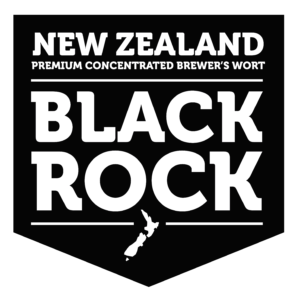Brewing your first Black Rock Kit
Measuring Specific Gravity
Equipment for Brewing at Home
Clarification
Cleaning & Sanitation
Bottling your beer
Bottling your beer
The Black Rock Story
Intro to Kegging and Equipment
Options for Carbonating Your Beer
Fermenter Options
Keg Cleaning and Sanitation
Partial Mashing Your Brew
Transfering your beer to your Keg
Unhopped Wort Concentrates
Pressure Transfer Between Kegs
Introduction to Brewing Recipes
Brewing Instructions:
![]() English Instructions (PDF 44.15 KB)
English Instructions (PDF 44.15 KB)
![]() Chinese Instructions(PDF 122.61 KB)
Chinese Instructions(PDF 122.61 KB)
![]() French Instructions(PDF 53.26 KB)
French Instructions(PDF 53.26 KB)
![]() French Canadian Instructions(PDF 43.79 KB)
French Canadian Instructions(PDF 43.79 KB)
FAQ's
Click here to view a range of frequently asked questions about brewing. We are always adding to this list so if you have a question that isn't covered please feel free to send it through to us and we will answer it. It may even end up on the FAQ page.
Brewing Preparation
Cleaning and sterilising is a very important factor in successful brewing. It helps to avoid infections which can lead to poor tasting beer. We recommend using Washing and Sterilising Powder (supplied) to sterilise your fermenter and all separate components that will come in to contact with the brew, such as your stirring spoon, bottling device, etc. Mix steriliser in your fermenter using a total of 5 litres for this stage. Soak all the equipment (including the inside of the lid) in the solution for a minimum of 30 minutes. Swirl the solution around to make sure the whole inside comes into contact with the solution and also run a little through the fermenter tap. Thoroughly rinse all equipment with lots of fresh water.
Brewing Instructions
To make beer there are four essential ingredients required: water, fermentable sugars (traditionally extracted from malted barley), hops and yeast. The brewing kits provide the malted extract and hops already processed and combined according to our brewers recipes. The yeast is provided under the lid of the brewing kit. It requires only the water and some extra brewing sugar (supplied) to be added by you.
- Take brewing kit; remove the label and plastic cap. Find yeast enclosed under the cap and put aside for the moment.
- Stand can in hot water for 10 minutes to soften contents.
- Dissolve contents of can and 1kg of brewing sugar in 2 litres of hot water in your fermenter. Then add 17 litres of cold water. Mix thoroughly.
- Add 2.5 litres of either hot or cold water so as to give a final temperature of approximately 18 - 28°C, to avoid damaging the yeast.
- Sprinkle yeast from the sachet over the liquid surface and affix lid and airlock (half fill the airlock with water).
- Airlock bubbling shows fermentation has started (6-12 hours after adding yeast). Keep brew at between 18 - 28°C until specific gravity reaches 1006 (in approximately 4-7 days). At this time the airlock will have stopped bubbling.
Fermentation Monitoring
You can monitor how your brew is coming along using your thermometer and hydrometer. Do not remove the fermenter lid during fermentation as this may introduce an infection. Watch the thermometer on the side of the fermenter and ensure the temperature remains between 18 and 28°C. If your brew drops under 18°C, then fermentation may slow down or even stop. In winter you may need to use a heater pad or heater belt to keep a constant temperature above 18°C.
The hydrometer measures the density (specific gravity) of liquids. For brewing purposes it measures the amount of sugars (malt and dextrose) in the brew. The original gravity of the brew will be approx.1035-1040. As fermentation proceeds the sugars are converted into alcohol and carbon dioxide (CO2). The CO2 can be observed bubbling through the airlock during fermentation. When fermentation is complete a standard can of concentrate and 1kg of dextrose brewing sugar will usually finish at a specific gravity of 1006. If using a liquid brewing sugar or malt extract instead of sugar, then the reading is usually higher at 1012.
To take a reading, use the tap on the fermenter and fill the test jar approximately 3/4 full until the hydrometer floats. Give the hydrometer a quick spin to remove any gas bubbles as this will interfere with the reading. Where the beer cuts across the hydrometer, is where you get the reading on the scale of the hydrometer. Do not put the beer back in the fermenter. If using a clearing agent (finings), add the clearing agent just before fermentation stops (at approx 1010 specific gravity). When the hydrometer reading remains constant for 24 hours the brew is ready for bottling.
Bottling and Conditioning
- Once fermentation is complete, you are ready for bottling and bottle conditioning of the beer. Sterilise 30 x 750ml bottles, crown seals and all bottling equipment. To do this, wash away any visible dirt with a bottle brush. Then, mix Sterilising Powder with warm water, and soak the bottles for 30 minutes. You don’t need to fill the bottles, 1/4 or 1/2 fill is fine but you will need to swirl it around so that the whole inside surface has been covered. After soaking, rinse thoroughly with fresh water.
- Add one teaspoon (slightly heaped) of normal sugar to the bottom of each bottle. If using stubbies, halve the amount of sugar in each bottle.
- Remove the airlock before opening the tap to prevent water from the airlock being drawn into your brew.
- Fit the Brewers Bottling Valve to the tap. Fill each bottle to within 40mm from the top by lifting the bottle up so the valve presses on the base of the bottle and opens, allowing the beer to flow.
- Cap each bottle using crown seals and a capper.
- Gently tip each bottle 4 times to dissolve the sugar.
- Date and label each bottle.
- Store the bottles upright in a warm place (approx 18 - 25°C) for five days to allow for secondary fermentation (bottle conditioning) which charges the beer with CO2 bubbles. After the 5 day period, move your bottles to a cooler place (approx 8 - 12°C) and leave for a further week for the beer flavours to mature before consuming.
TIPS
Bottling
We recommend the use of Plastic Bottles when bottling your brew. Plastic bottles are readily avaliable from brewing stores or you could even use cleaned and sterilised old soft drink bottles. Plastic bottles if over carbonated due to non complete fermentation or excessive priming sugar will only split and not explode.
Glass bottles in Australia and New Zealand are often only intended for single use and should not be used repeatedly as they are sometimes not strong enough to handle the pressures of bottle conditioning.
Please remember to make sure that your fermentation is complete by using a hydrometer to measure the Specific Gravity prior to bottling. When the hydrometer reading is constant for 24 hours at the end of the fermentation period (approx 5-7days) your brew is ready for bottling. Only ever use the prescribed amount of priming sugar for each bottle when bottling which is one teaspoon per 750ml of brew.
Dextrose
Use instead of regular sugar in your brew. It is a form of glucose manufactured from starch, and it gives your beer a fuller flavour. However for priming it is still best to use normal household sugar.
Maltodextrin
Also a form of glucose, Maltodextrin is an unfermentable sugar so is used in brewing to add flavour and body to a brew. As it is an unfermentable sugar, when using a mix that contains Maltodextrin in your brew please note that you will have a higher end Specific Gravity (SG).
Malted Barley
Malted Barley is the main ingredient of beer, the beer kits are a mix of different types of malted barley with added hops made into a malt extract to create the flavour profile of a brew. In unhopped form you can use malt extract as your sugar source, it is not as fermentable as Dextrose, Sucrose or Higher Sugars but like Maltodextrin adds flavour and body to your beer. Where you would normally use 1kg of Sugar add 1.5kg or 1ltr of unhopped malted extract. Again if using malt extract as the sugar source your brew will have a higher end SG.



